Permalink structure is important when it comes to search engine optimization. Not only do these links appear nice to the human eye, but they are easier to scan for bots. This is why it’s always a good idea to have URLs that look good from all angles. But what about the custom post types permalink structure?
Unfortunately, not all of your content may fall under the WordPress feature to change how URLs appear. Some plugins may have their own hierarchy of how content is posted.
In this tutorial, I’m going over how to create custom permalinks for custom post types. It may help in SEO as well as engage readers by helping them identify the point of the content you’re creating.
What Are Custom Post Types?
A custom post type is essentially a piece of content that is not necessarily governed over the same set of rules as the traditional post and page in WordPress. They will have their own value in the database and usually offer an incredible amount of flexibility regarding customization.
In a nutshell, most custom post types are created to do nothing more than organize content. However, some plugins will have their own types of content outside normal pages and posts for WordPress.
Using Custom Post Type Permalinks
For today’s tutorial, I’m going to demonstrate the Custom Post Type Permalinks plugin. It’s a simple and easy-to-use system that helps ensure your content structure remains SEO friendly and identifiable.
Go to the Plugins area of WordPress and click, “Add New.”
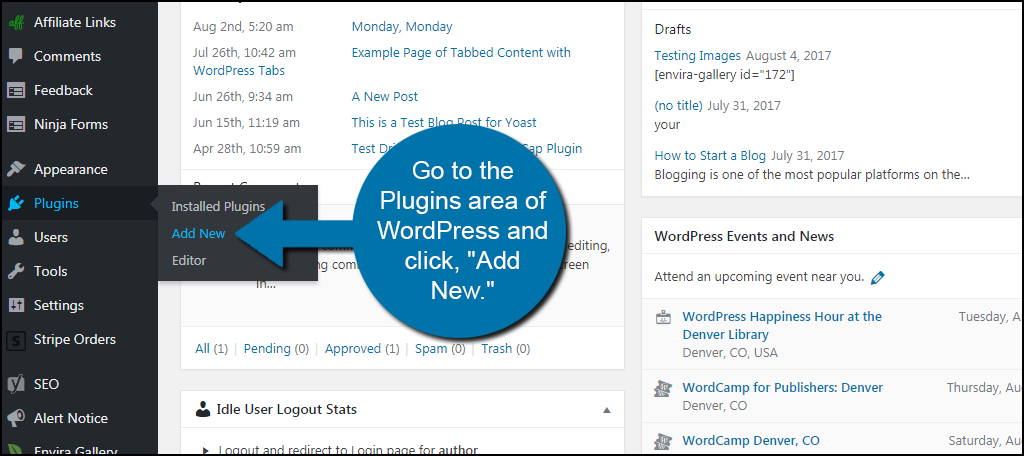
Install and activate the “Custom Post Type Permalinks” plugin. This tool doesn’t have its own section like some of the others you may use. Instead, it expands what is already available in the WordPress settings area.
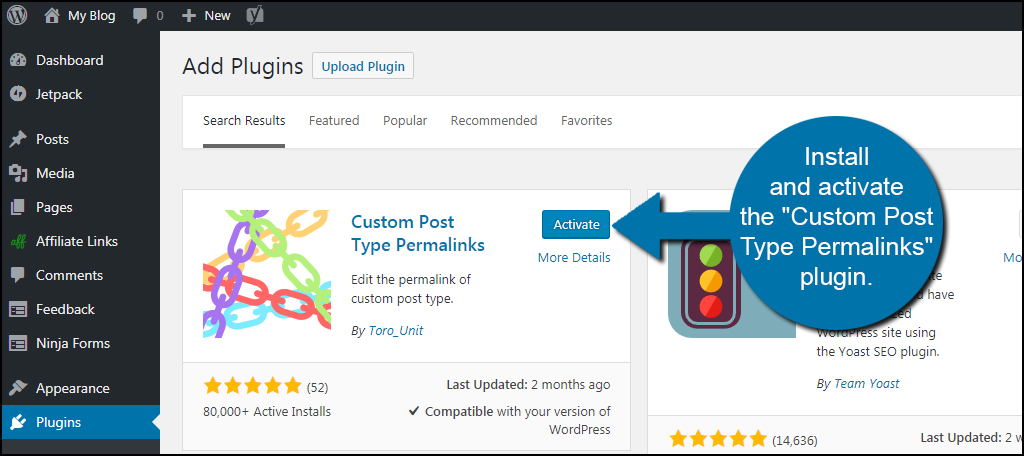
Go to the Settings section and click, “Permalinks.” You might have accessed this area in the past if you changed how your permalinks appear for SEO.
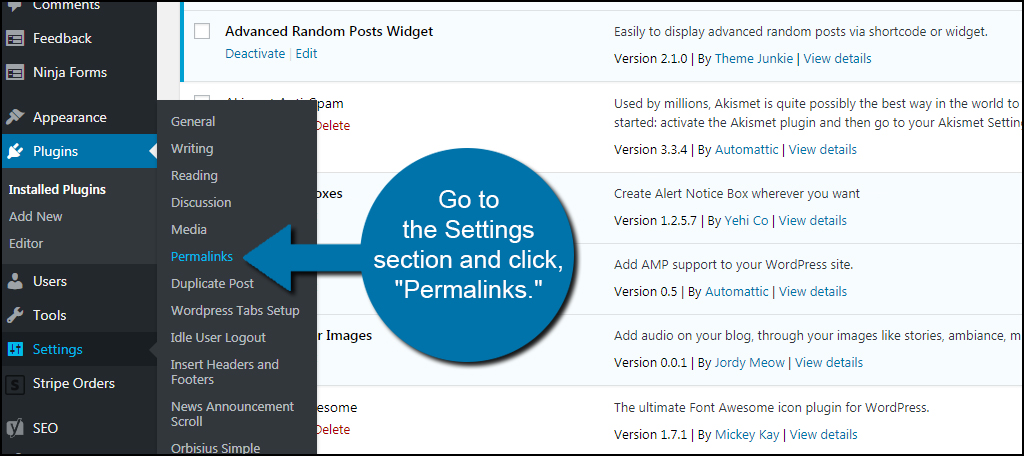
In the Permalink Settings screen, you’ll need to scroll down. Near the bottom, there will be a section specifically for custom post types. It is here where you’ll make your adjustments for any custom post types you have in WordPress.
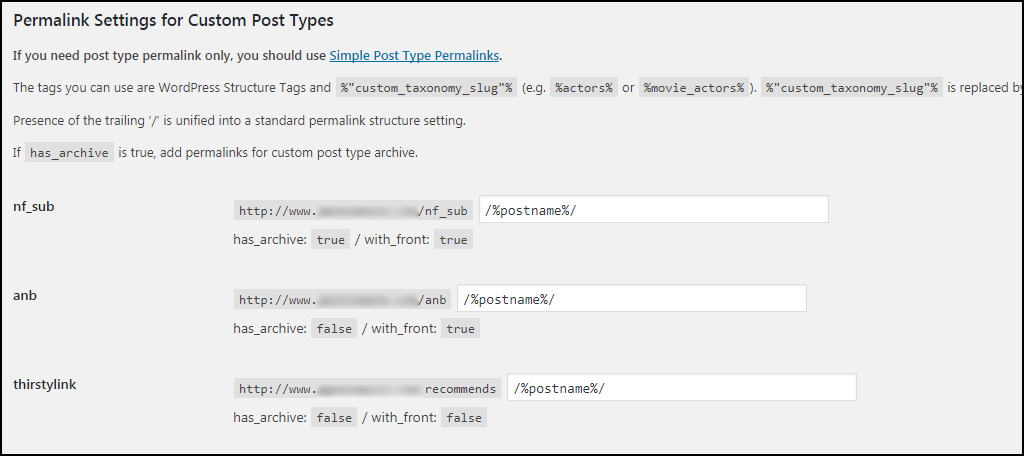
The plugin will automatically scan your system and display available custom post types. As you can see from the example image, elements like Thirsty Affiliate Links has custom types you can modify. However, this may not be the best example. You see, Thirsty Affiliates is also a link cloaker. This means the URL is already modified by that particular plugin and optimized for SEO.
This also means you need to pay close attention to what plugins are creating custom post types and whether you need to modify them or not.
You need to know the taxonomy of the elements you want to display. For example, “/%postname%/” will display the name of the post in the URL. This will automatically use the hyphenated title for Internet use.
If you have a custom post titled, “Best Music of 2017,” the post name control would make it appear as “/best-music-of-2017/.”
Most plugins that use custom post types will have a list of the elements you can use in the permalink. You can also place “/%category%/” if you’re using something directly from your WordPress categories section. This is taken from the WordPress category slug.
A slug is the version of the URL that is user and SEO-friendly. As most categories and sections of content use single-word slugs, it’s not difficult to look up what these are in WordPress.
Custom Post Types Permalinks will also allow you to use post ID numbers instead of the title. However, this is usually not a good practice as it takes away from search engine and user optimization. The point is to make the content more legible, not hidden by using numbers.
For example, “/%post_id%/” will show the numerical value of the post and not the title. So, a blog post titled “10 Best Pop Songs of April” will look something like: “https://ggexample.com/music/1337.”
Unfortunately, I am unable to give you a complete list of everything you can add to the custom post URL. This is because it will be determined by other plugins, settings, and modifications you’ve already made to WordPress. The examples above are merely part of the core system and should be available for everyone.
Once you’re done editing, click the “Save Changes” button.
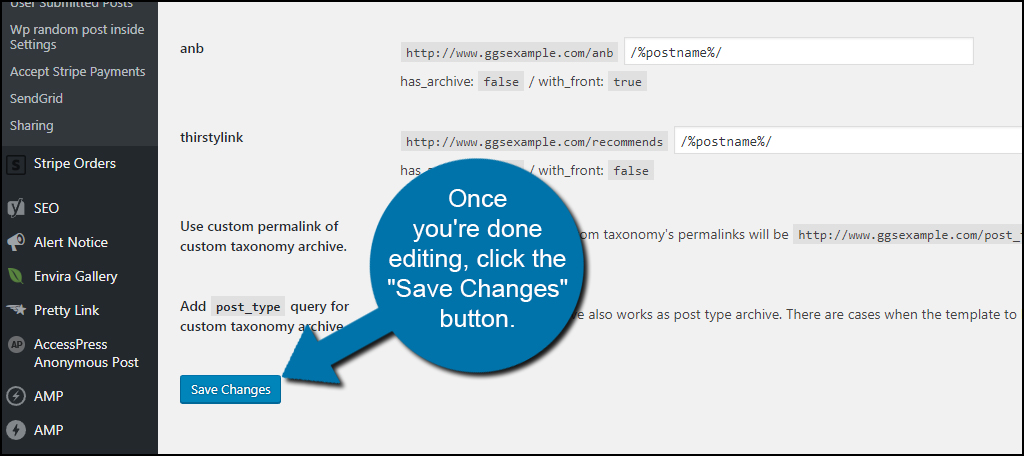
Other Plugins For Custom Post Types
Using Custom Post Types Permalinks is useful, especially when you use plugins which compliment it. Although you could manually add code to WordPress to create these post types, plugins make the process so much easier and faster.
Here are a few I found that help you set up those taxonomies and slugs I mentioned earlier.
Custom Post Type UI
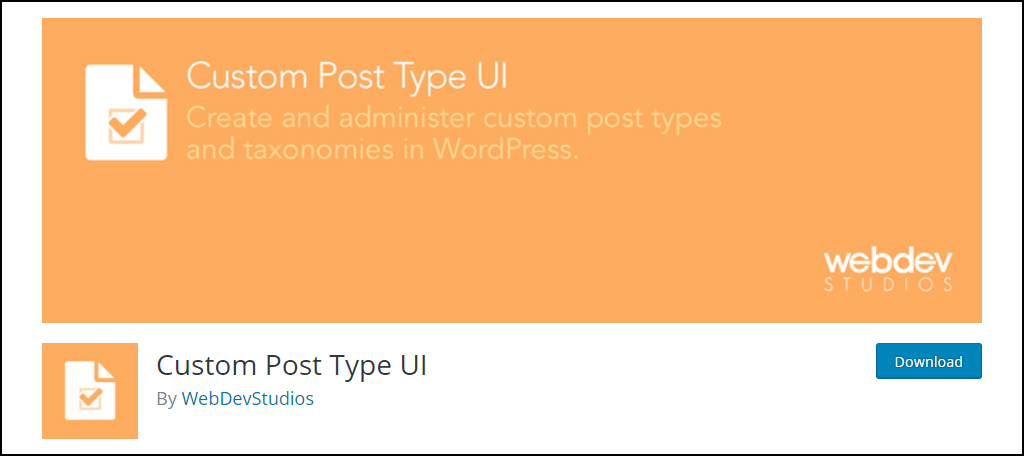
Custom Post Type UI is a plugin that helps you create taxonomies in WordPress. It has a variety of features available and also comes with the ability to import or export data in case you want to duplicate or move your website. It’s also good for a backup method, especially if you create an intricate list of custom post titles and taxonomies.
Custom Post Types and Custom Fields Creator
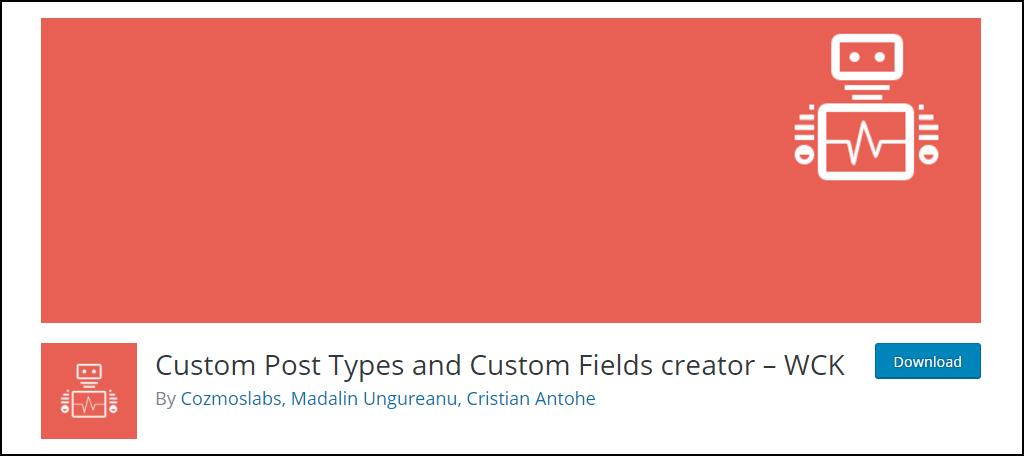
Custom Post Types and Custom Fields Creator is an extensive tool that goes beyond simple taxonomies. It comes with built-in adjustments for meta boxes on top of the ability to create post and taxonomy types. The plugin comes with a WYSIWYG editor as well as several fields to accommodate almost any need when creating content.
Custom Post Type Editor
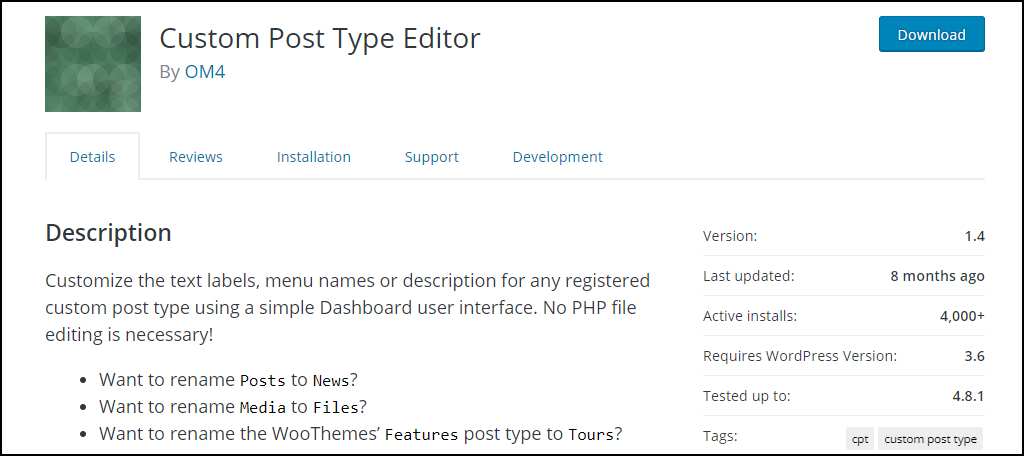
The Custom Post Type Editor is a good compliment to Custom Post Types Permalinks. You can change the name of any post type whether it’s built-in by WordPress or as an extension from another plugin. For instance, you could change the built-in Media type in WordPress to “Entertainment” if you wish. Then, you can use those names in the permalinks plugin above.
Can’t you just use categories instead of custom post types to separate certain types of content?
While it’s true you can use the category system in WordPress to organize your posts, many people like the idea of keeping some things completely separated. For instance, you could have a custom type specifically for any photographs you take as a way to create a portfolio. This custom type would be completely distinct from other content in WordPress and may not be visible in the category list widget.
Categories only cover certain kinds of content. A lot of plugins you’ll use for creating new materials will not be available directly by the category widget. This is where Custom Post Types Permalinks will make a difference. Many of these other elements should have optimization for search engines of their own, so you’ll have to do a bit of research before editing permalinks.
Customization for Your Needs
For the most part, many of you may not need a custom post type. Unless you plan on adding a wide variety of content and need the separation, you may find using the built-in post types to be more than enough. However, it doesn’t hurt to add a bit of SEO-friendliness to custom types created by other plugins. Anything to boost optimization is always a good idea.
What kind of add-ons do you have for improving SEO? How many different categories of content do you have on the website?
